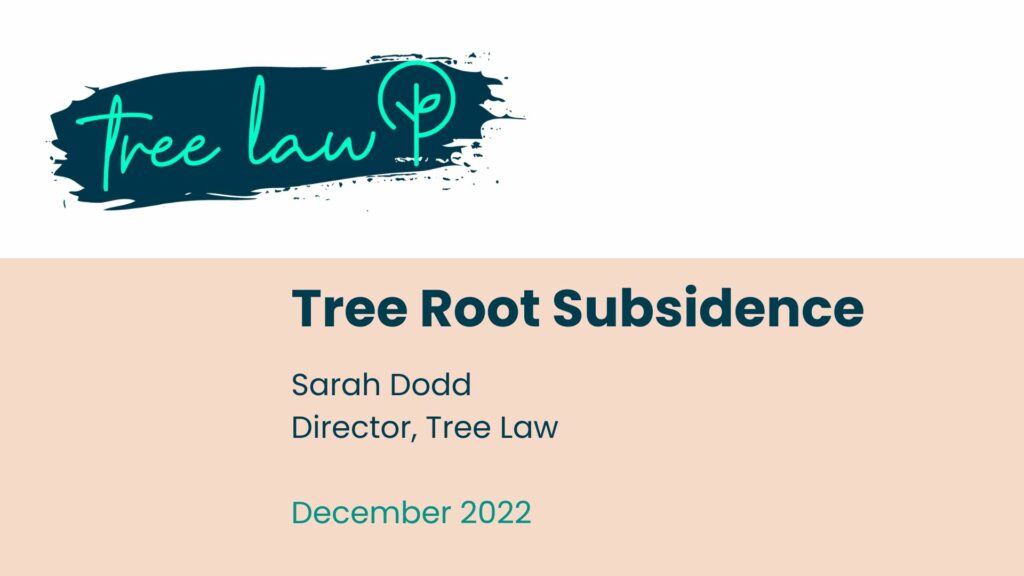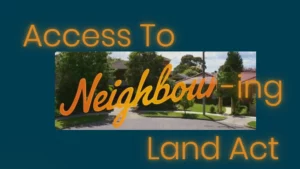I was talking about Tree Root Subsidence which is my hot topic given the link between Tree Law and my current position as Chair of the Subsidence Forum
I started the session telling my story. Owner of Tree Law, chair of the Subsidence Forum,, focus on carbon emissions and carbon impact of professional legal services. I also used the time to introduce people to Tree Law TV and the free-to-use resource of videos answering simple and regularly asked tree law questions. Finally the commitment to donate 10% of fees to the client’s choice of charity in line with the UN Sustainable Development Goals.
So, what is tree root subsidence? Well hop over to Tree Law TV to hear more about it Tree Root Subsidence – YouTube
The hot dry summer of 2022 led to a surge of claims with some insurers reporting times over the summer where their claims numbers were 400% of what they would expect in a normal year. How can local authority tree owners manage risk of trees in their ownership causing Subsidence damage to propertie
It is a really tricky risk to manage as, even in the hottest of hot spot areas for claims, there is never more than a 5% chance of tree causing subsidence damage. So it’s a balancing act of keeping trees to retain all of the good things that they bring as well as effectively using budgets to manage risk to avoid properties suffering damage and councils facing legal claims.
Before facing a legal claim, a local authority might commonly receive a request for tree removal where an insurance company believes that a tree has caused subsidence damage to their insured property and that removal is needed for the property to stabilise. This phase of a claim is called ‘mitigation’, i.e., where a claimant seeks to reduce the extent of the damage to the property by asking the defendant to carry out some action (in this case tree removal).
We chatted through all the things to think about when being faced with a tree removal request:
Evidence – has sufficient evidence been provided which conclusively shows that the tree has caused the damage
JMP – the joint mitigation protocol is an agreed evidential requirement for tree root subsidence cases, undergoing a revamp atm
Location – is the tree in an area known to be problematic for subsidence. Will removing the tree be an option or might that removal cause heave damage to other properties nearby
Finances – who pays for tree removal where a request is made in this mitigation phase? Presumably it will come from the tree team’s budget and that will be limited as trees are managed for risks far wider than subsidence alone
Local Residents/Environment – will the climate crisis and the duty to consult coming to mean that local authorities will need to consult with local residents when wishing to remove one of their own trees, we are likely to see a significant increase in questions and disputes coming from interested members of the public. Local authorities will need to be very clear on their reasons before taking action so as to avoid judicial review proceedings and complaints to the Office of Environmental Protection
Responsibility – finding out who is responsible for the management of a tree is often not as easy as it seems. A tree can be owned by one party and managed by another. A tree can be on an areas of unregistered land of no known ownership or can be straddling a property boundary.
CAVAT – before taking action a tree valuation should be carried out on the implicated tree. There should be a financial balancing act between the value of the tree and the value of the damage to the property
Future/Risk – as climate change takes hold councils will be facing an increasing number of subsidence claims as hot dry summers are perfect conditions for tree root subsidence. However, trees are essential to retain in order to mitigate the effects of climate change. This is a difficult balancing act when assessing risk into the future
Press attention – we have seen all sorts of parties hitting the press as a result of trees. Councils, individuals, campaign groups and homeowners should all be aware of the fact that being tried before the court of public opinion in the press can be extremely stressful, expensive and damaging. Whilst climate change and trees have the attention of the press this is something that should be kept in mind when dealing with claims.
Not a straightforward one-size-fits-all approach can be taken to these cases. They are all fact specific and should be treated individually.
Going back to the question of the environment I spoke about the new duty to consult and what the guidance is going to look like when that is released by DEFRA in the spring.
Whilst a lot of the attendees commented that tree root subsidence claims aren’t common on their patch the work of data scientists suggest that we are going to see claims arising more often in other areas of the UK.
Any questions about tree root subsidence, whether that is in mitigation or claim stage and we are here to help at Tree Law.
Oh and big shout-out to my tree law bestie, Elizabeth Nicholls, tree law barrister and mediator expert who spoke about trees falling onto highways.



